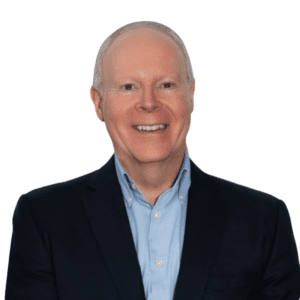
With consulting revenues soaring, choosing the right partner means defining objectives, setting scope, and avoiding solutions that miss the mark—or your watch.
The market for consulting services continues to expand rapidly, with global revenues estimated between $100 billion and $200 billion in 2024. That’s a staggering figure for a profession often jokingly accused of taking your watch, telling you the time, and keeping the watch along with your money!
However, those less cynical would argue that the best consultants not only help you adjust your watch but might even provide a better one. The real challenge is knowing which consultants will add value rather than simply charge for their time.
Having been on the buy side and today on the sell side of consulting engagements, I’ve learned—sometimes the hard way—that choosing the right consultants starts with a clear and agreed understanding of the assignment’s objectives. Are you looking to develop a business strategy, create a target operating model, onboard a tech platform, or manage a complex project portfolio? The first and most fundamental step in avoiding consultants who might just take your money and your watch is ensuring both parties clearly understand what needs to be done and what success looks like.
Consultants typically approach clients in one of two ways: expansively (“We’re here to help with everything you’re doing wrong”) or selectively (“We specialise in these key areas where you need support”). The expansive approach often leads to consultants searching for problems mid-engagement, whereas the selective approach allows for a focused, structured, and collaborative process.
This structured process follows a consulting hierarchy, typically represented as a pyramid. At its base, consultants provide data and insights, then move up through identifying problems, proposing solutions, assisting with implementation, driving operational change, and, at the top, becoming a strategic business partner.

Savvy clients and credible consultants work together through the consulting hierarchy, ensuring they identify the right problems, propose realistic solutions based on proven experience, and establish clear success measures. And they should explicitly agree on how many layers of the hierarchy the engagement will cover. This will keep scopes defined and timelines realistic.
Of course, reaching this clarity requires tough questions upfront. Consultants should ask: “What solutions have you tried before, and what were the outcomes?” “Do you already have a preferred approach?” and “Are all stakeholders aligned on the problem?” While these may seem frustrating, they are essential to ensuring the engagement doesn’t produce a brilliant solution to the wrong problem—or one that simply won’t work.
Transparency is critical. Consultants who genuinely seek to add value should operate within their proven areas of expertise or partner with specialists to extend their capabilities. A strong partnership approach can significantly enhance the assignment’s impact and prevent consultants from overpromising and underdelivering.
Regular check-ins and a structured end-of-engagement review are essential. Both parties should assess whether objectives were met, whether the engagement stayed within scope and whether the delivered outcomes justified the investment.
Ultimately, ensuring that a consulting engagement doesn’t turn into an exercise in watch theft requires:
While on the sell side, I haven’t asked a client for their watch, I did, whilst on the buy side, come dangerously close to handing mine over. That’s why I felt it might be helpful to share these insights, helping clients and consultants work together in a way that delivers true value—without any timepieces changing hands. I hope I’ve achieved that in this piece, that you enjoyed reading it, and that it helped you better understand the approach the best consultants take to their client engagements.
The Payments Association
St Clement’s House
27 Clements Lane
London EC4N 7AE
© Copyright 2024 The Payments Association. All Rights Reserved. The Payments Association is the trading name of Emerging Payments Ventures Limited.
Emerging Ventures Limited t/a The Payments Association; Registered in England and Wales, Company Number 06672728; VAT no. 938829859; Registered office address St. Clement’s House, 27 Clements Lane, London, England, EC4N 7AE.







Log in to access complimentary passes or discounts and access exclusive content as part of your membership. An auto-login link will be sent directly to your email.
We use an auto-login link to ensure optimum security for your members hub. Simply enter your professional work e-mail address into the input area and you’ll receive a link to directly access your account.
Instead of using passwords, we e-mail you a link to log in to the site. This allows us to automatically verify you and apply member benefits based on your e-mail domain name.
Please click the button below which relates to the issue you’re having.
Sometimes our e-mails end up in spam. Make sure to check your spam folder for e-mails from The Payments Association
Most modern e-mail clients now separate e-mails into different tabs. For example, Outlook has an “Other” tab, and Gmail has tabs for different types of e-mails, such as promotional.
For security reasons the link will expire after 60 minutes. Try submitting the login form again and wait a few seconds for the e-mail to arrive.
The link will only work one time – once it’s been clicked, the link won’t log you in again. Instead, you’ll need to go back to the login screen and generate a new link.
Make sure you’re clicking the link on the most recent e-mail that’s been sent to you. We recommend deleting the e-mail once you’ve clicked the link.
Some security systems will automatically click on links in e-mails to check for phishing, malware, viruses and other malicious threats. If these have been clicked, it won’t work when you try to click on the link.
For security reasons, e-mail address changes can only be complete by your Member Engagement Manager. Please contact the team directly for further help.